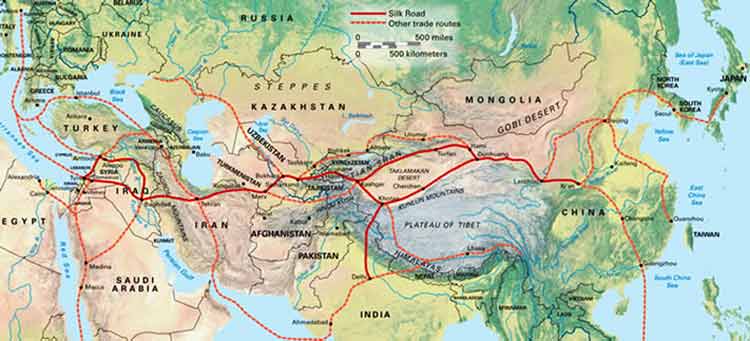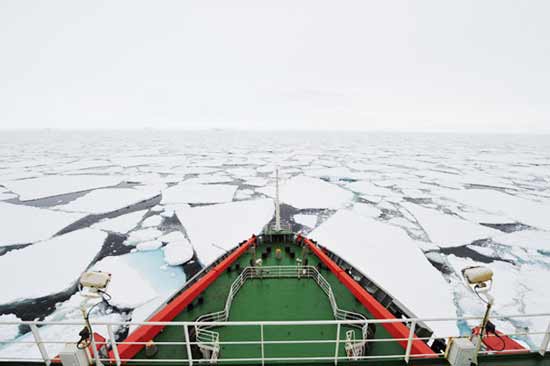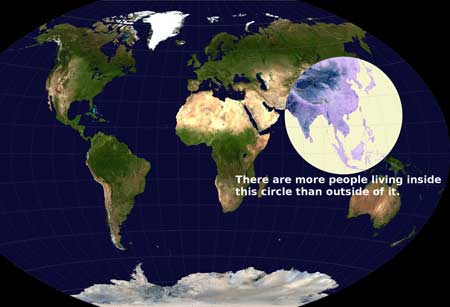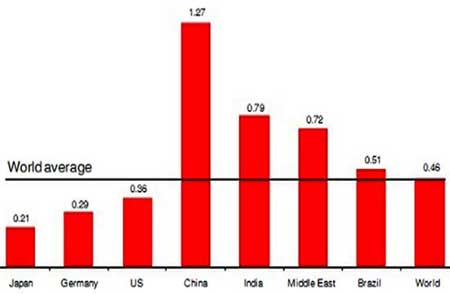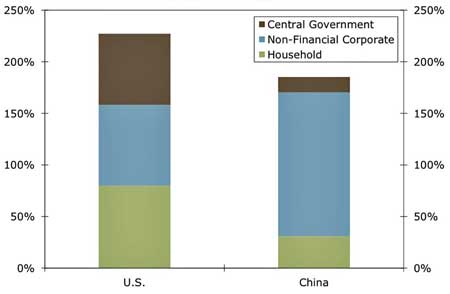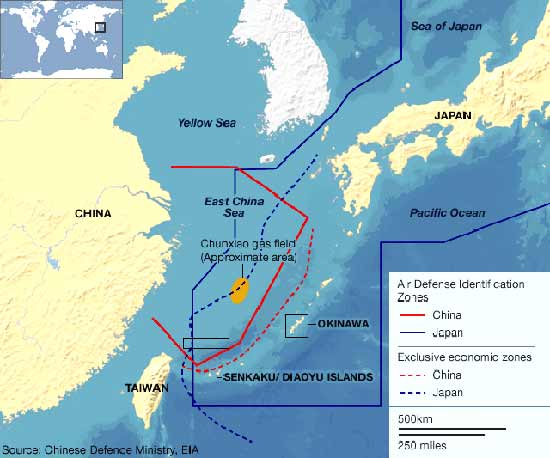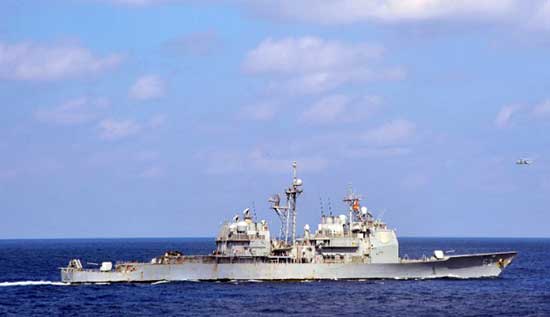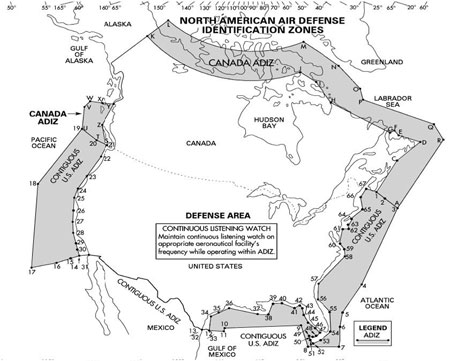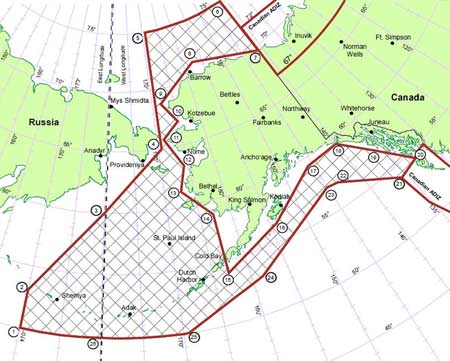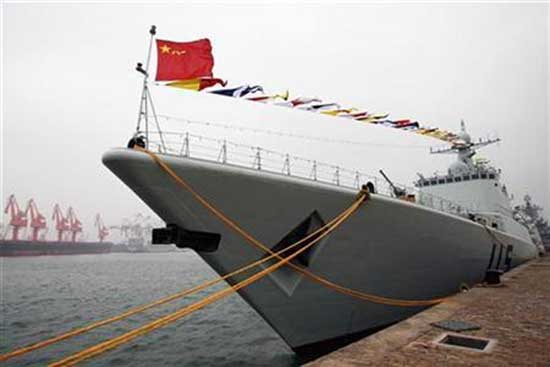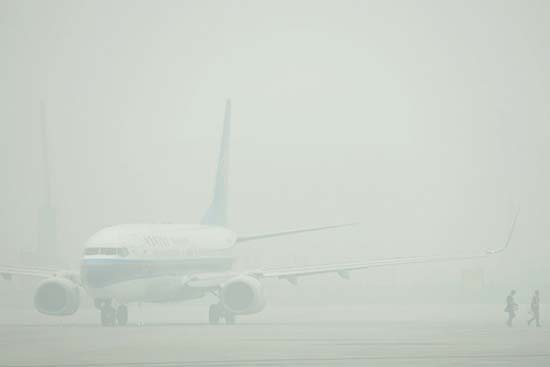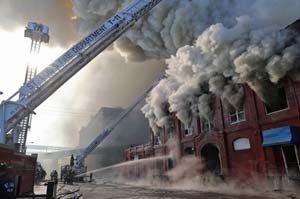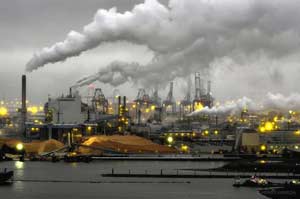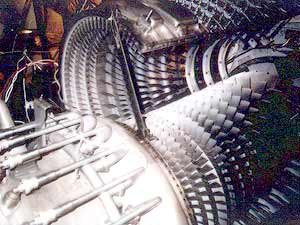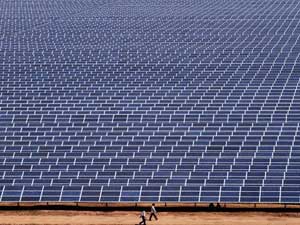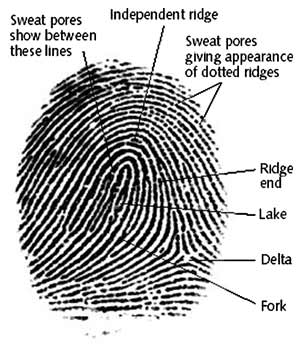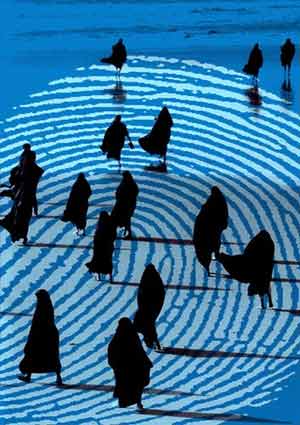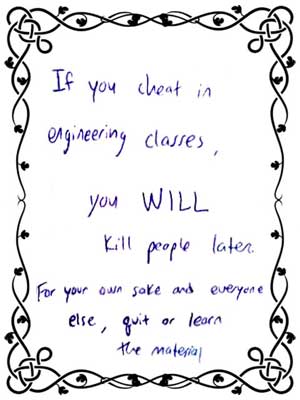The Silk Road was in use from the first millennium BCE through the middle of the second millennium CE. The interactions among people from diverse cultures along the way promoted an unprecedented sharing of commodities, ideas, arts, sciences and innovations.
Everyone is entitled to his own opinion but not to his own facts.
—Using the Good China
Dec. 31, 2013
The Chinese Have a Lot of Projects, both Underway and in Planning:
- US immigration officials are considering a proposal from Chinese investors to create a multibillion-dollar development in New York’s Catskills. The 600-acre “China City of America” would be located far outside New York City in upstate wetlands. This is a meticulously planned project, calling for family housing, a college, and student residences (among other structures).
- A huge new road is resurrecting the Silk Road, the trade route that once literally put Tibet and Xinjiang on the map. It’s now a vital artery for trade that funnels goods and raw materials to nearby Horgas Land Port, the special trade-zone set up with neighbouring Kazakhstan. Beijing is focused on tapping the Balkan Peninsula’s unexploited business potential by making strategic investments in Greece, and is drafting long-term plans for a modern Silk Road across the Eurasian landmass.
- China is investing $140 billion into 25 new rail projects across the country as part of a massive stimulus campaign aimed at creating jobs and modernising national infrastructure. China lays more than 5,000 miles of new railway track each year domestically (by 2020, it should have more high-speed rail than the rest of the world combined; today, it has more than 8,000 kilometres). But China is also sponsoring the modernisation or deployment of new rail lines across Eurasia towards Europe. Eurasia is already being densely knit together through an infrastructural exoskeleton of railways and pipelines: Iron Silk Roads. China is negotiating with 17 countries between itself and Great Britain for a high-speed rail to be completed by 2020, connecting Beijing Central to London St Pancras in just 2-3 days. That’s more than twice the distance as from New York to San Francisco in the same amount of time as Amtrak takes for a single journey. Soon, Chinese goods can flood the streets of Berlin and Paris and Middle Eastern oil can arrive overland to China instead of through the Straits of Malacca.
- In 2012 the Civil Aviation Administration of China (CAAC) announced that China would build 82 new airports and expand 101 existing ones across the country from 2011 to 2015 in order to form a national airport network covering 89% of the country’s total population by 2020. By the end of 2015, there’ll be 230 passenger and cargo airports in China up from 182 now. (If there are 182 now with 82 to be built by 2015, shouldn’t there be 264 in 2015? But there’ll only be 230? Will 34 old airports be closing down? That wasn’t mentioned.) In comparison, the US has 19,000 airports. Even Brazil (at 700) has more than China. The Ministry of Finance estimates that an airport can produce output 8 times its cost to the local economy. However, 130 of the 182 existing airports showed losses totalling more than 2 billion yuan. (A Chinese airport must handle at least 1 million passengers annually to make a profit. But all 12 regional airports in Yunnan province were profitable due to the “network effect” said a CAAC spokesperson.) Beijing has based its projections on an ever-expanding economy. Another consideration is that the Chinese sky is under the control of the country’s air force, which today hogs around 80% of total airspace.
- China’s moon exploration programme is about developing space engineering to prepare for deep space exploration in the future—and it is also a source of national pride.
- China has built 3 Antarctic research stations—Great Wall, Zhongshan and Kunlun. “As a latecomer to Antarctic scientific research, China is catching up,” the director of the State Oceanic Administration’s Chinese Arctic and Antarctic Administration has said. The base will be used to study geology, glaciers, geomagnetism and atmospheric science.
What Are Some of the US / China Issues?
In the economic field, the bilateral trade volume between the US and China rushed to nearly $500 billion in 2012, each becoming the number two trading partner with the other country. The stock of mutual foreign direct investment (FDI) broke a record high of $100 billion up to the end of 2012. Affluent low-price Chinese goods help save billions of dollars for American consumers and to lower the inflation rate in US. As the largest foreign holder of US Treasury Bonds (valued at about $1.3 trillion), China also provides huge amounts of money for the US government to jump start the paralysed economy after the economic crisis. In the area of security, the two countries share more common interests than divergences. From taking nukes away from North Korea to stabilising the supply of oil in the Middle East to anti-piracy in the Indian Ocean to the free and safe navigation in the South China Sea, the United States and China share many of the same national security concerns.
This year marked the 70th anniversary of the Cairo Declaration. During the Second World War, the United States and the Soviet Union, with distinctively different social systems, cooperated closely in fighting against their common enemies—the fascists in Germany, Italy and Japan. Joseph Stalin highly praised the realistic approach of the Americans, saying this spirit “is an overwhelming force.” But during WWII, the United States, in collaboration with the United Kingdom, decided to give the Kuril Islands (called the Northern Islands in Japan) to the Soviet Union in order to coax it to declare war against Japan. The Chinese maintain that the Diaoyu Islands have been in Chinese territory since ancient times, and the Cairo Declaration, concluded and signed with the participation of the US President, expressly stated that the islands should be restored to China. The United States government, however, favours and takes sides with Japan on this issue. (There’s some wiggle room here which will presently be discussed in more detail.)
What Are Some Chinese Government Issues?
Pollution is a problem (especially smog). Even apart from pollution, China faces a growing cancer crisis. The World Health Organization expects cancer rates in China to grow by 78% by 2030, a product of growing affluence and changing lifestyles. One example of the ecological damage being done: Situated just to the west of Baotou, a city in the resource-rich region of Inner Mongolia, the mine dump for Baotou Iron and Steel Group is enclosed by a concrete wall that stands 20 metres high. It’s one of China’s largest tailings pools, and contains roughly 180 million tons of metal waste powder. At least 4,000 hectares of farmland have already been contaminated by seepage. One crack in a wall is all it would take for a dark grey oval that sits across 11 square kilometres of land to create a massive disaster. More than 7 villages with over 3,000 residents and 300 hectares of land have already been affected. The contamination is expanding underground, approaching the Yellow River at a speed of 20 to 30 metres annually. The mine has gained attention on reports that the hazardous slurry contains large amounts of rare earths and other minerals, estimated by some to have a total value as high as 80 trillion yuan (US$12.8 trillion). If a breach occurs, the consequences for Baotou (the largest city in Inner Mongolia) and the Yellow River would be disastrous. (The tailings pool is also in an earthquake-prone area.) But since the amount of rare earths recovered with current technology for iron ore extraction is still high, there’s no profit motive to spend huge sums extracting rare earths from the tailings pool.
While excessive population may be a problem in China, population imbalance adds to that—so much so that China is relaxing its “one child” policy begun in 1978 whose main purpose was to “alleviate social, economic, and environmental problems” as a result of its soaring population. According to estimates, this policy has prevented 400 million births from about 1979 to 2011. Families can have two children if at least one parent is from a one-child family. It’s expected that 9.5 million extra babies will be born as a result of such reform. However, by 2020, sociologists expect an “extra” 35 million Chinese men—males for whom there are simply no available female partners. That’s slightly more than the population of Canada. (Best to keep them busy building things. Otherwise, the military will need to grow.)
- There are more Muslims and more Hindus inside the circle than outside. There are more Buddhists and more communists inside than outside as well. The circle pulls all this off while being mostly water and including the most sparsely populated country on earth (Mongolia). The circle also contains the highest mountain and deepest trench in the world. Rural middle-of-nowhere Japan means something entirely different than rural middle-of-nowhere United States. People are everywhere in Japan. But they’re even denser in China.
- Chinese families once had an average of 4 children each. An increasing tendency for people to move for the sake of a job makes it more likely single children will grow up without close ties to their grandparents, or even to stable childhood friendships.
Quality control can be a problem for China. For example, an 8-lane suspension bridge in northeast China, part of an airport expressway in Harbin city, collapsed last year, only 9 months after it opened. It had cost US$300 million to construct. A 320-foot section broke off when 4 heavy trucks drove onto the bridge, plunging them to the ground and crushing them. (Two people died last week when a road in that same city caved in, leaving a hole 10 metres wide and 10 metres deep.) The official Xinhua news agency said at least 6 major bridges had collapsed across the country since July last year, and that shoddy construction combined with overload were to blame.
Local debt is a problem. Two years after analysts began raising concerns about municipal borrowing, Chinese local governments appear to have piled up about $3.3 trillion in debt by the end of 2012, perhaps double the level in 2010. The report, released this week by the Chinese Academy of Social Sciences, is the latest indication that China may be investing too aggressively in property and infrastructure projects, potentially setting the stage for a wave of loan defaults and a severe economic downturn. While many economists expect China’s economy to grow 7% in 2014, there are concerns about the sustainability of the country’s economic engine. In recent years, China’s growth has been fuelled by heavy investment in infrastructure, everything from new highways and railways to ports, subways and shopping malls. Now, analysts say the investment binge may have been excessive. The Chinese financial system is dominated by banks that can no longer cope with the demands of financing rapid urbanisation, so much of the debt is masked by “shadow banking” activities. Such activities allow large amounts of lending to take place off the books, through trust companies and so-called local government financing vehicles. Which leads to another of China’s problems…
Corruption is a problem. Like other socialist economies that have gone through monumental transition, China has experienced unprecedented levels of corruption, making it a major hindrances to social and economic development. Public surveys since the late 1980s have shown that it is among the top concerns of the general public. Corruption undermines the legitimacy of the CCP, adds to economic inequality, undermines the environment, and fuels social unrest. Bribery, kickbacks, theft, and misspending of public funds costs at least 3% of GDP. In 2013, an anti-corruption campaign led by new leader Xi Jinping included a 5-year moratorium on the construction of government buildings, as part of an effort to “[crack] down on corruption and waste.” The campaign has also included a focus on tightening the control of military license plates in order to crack down on their abuse by military officials. One folk saying vividly illustrates how the public sees the issue: “If the Party executes every official for corruption, it will overdo a little; but if the Party executes every other official for corruption, it cannot go wrong.” (Executes?) Corruption in China harms Western business interests, in particular foreign investors. They risk human rights, environmental, and financial liabilities, at the same time squaring off against rivals who engage in illegal practices to win the business.
Capital flight is becoming a bit of a problem. The Chinese wealthy now have about $658 billion stashed in offshore assets (about 13% of their wealth is overseas—but that’s well below the global average of 20–30%). Boston Consulting Group puts the number lower, at around $450 billion, but says offshore investments are expected to double in the next 3 years. A study from Bain Consulting found that half of China’s ultrawealthy—those with $16 million or more in wealth—now have investments overseas. And it’s not just the money that’s exiting the country. The wealthy are increasingly following it. More than half of China’s millionaires are considering emigrating or have already taken steps to move overseas. With China increasingly cracking down on ill-gotten gains and corruption, many of the politically-connected wealthy are looking for safer havens abroad. Australia just announced that it sold its first “significant investor” visa to an unnamed, wealthy Chinese toymaker. This type of visa is issued to rich foreigners who agree to invest at least $5 million in the Australian economy. So far, Australia has received 170 rich applications with a potential investment of $850 million. Deloitte estimates Australia could issue as many as 700 visas a year under the programme. America’s investor visa program—known as EB-5—is dominated by wealthy Chinese investors. It allows people who invest at least $500,000 (or in some cases $1 million) and create at least 10 jobs to get a temporary visa and apply for permanent citizenship. 80% of the 7,641 immigrants who got visas under the programme last year were from China.
Keeping the country together and the military under control could be a problem. Chris Kakris at the Arena for Accountable Predictions: “The Chinese government will be unable to manage the growing issues that it will face over the next couple of decades. These problems include (but are not limited to): national minority issues such as Taiwan, Tibet, Xinjiang and Inner Mongolia; urbanisation; rapid economic growth and income disparity; banking stability, taxation and corruption; climate change, pollution, water; representation and democracy; health issues, AIDS, and pandemics.” Kakris predicts the country may break up. Time will tell. (My money says no.) While the latest leader of China, Xi Jinping, was working his way up, former Paramount leader Deng Xiaoping’s successor, Jiang Zemin, was promoting dozens of senior officers who remain in positions of power today. Jiang was the man Deng advised to tend to the generals. In retirement, Jiang remains one of China’s leading power brokers. His military appointments made sure his influence would outlast his term. Hu Jintao, who replaced Jiang, likewise sought to anchor his position through military promotions and patronage before handing over to Xi. Both Jiang and Hu kept the funding tap wide open for new military hardware and substantially improved pay and conditions for the troops. Xi appears set to maintain heavy military spending despite competing needs. A hundred million Chinese still live in poverty, according to official measures, and there’s growing pressure to spend more on health, education and pollution control. Official defence spending is set to climb 10.7% this year to an official US$119 billion, however much spending takes place off-budget; many analysts estimate real outlays are $200 billion, second only to the US, which spends an official $566 billion.
The Chinese model is a growth process that’s inefficient, wasteful of energy and resources, highly polluting, destructive of the environment, and a promoter of corruption, debt, and social inequality.
What Are China’s Stated Goals?
(Naked imperialist power? Grabbing what they can get? No, not at all.)
From their reform roadmap:
- The Communist Party of China (CPC) has vowed in a key decision to build a more impartial and sustainable social security system, encompassing an improved housing guarantee and supply mechanism.
- China will strengthen protection of intellectual property rights (IPR), improve the mechanism to encourage innovation, and explore ways of setting up the IPR court
- China has decided to allow more non-state-owned capital into the market in order to develop a more mixed-ownership economy.
- China will enhance regulation of income secondary distribution through taxation.
- As part of its urbanization push, China will accelerate the reform of its “hukou” system, or household registration system, to help farmers become urban residents.
- China will promote market-oriented reform in state-owned enterprises (SOEs) by further breaking monopolies and introducing competition.
GDP growth will no longer be the yardstick for measuring local officials’ success. Now, according to a recent government document, what is to be stressed is success managing local finances and debt, reducing waste, improving the environment, raising production levels, and reducing associated injuries or deaths. (That all sounds good.) A good report card on scientific innovation, improved education, a smoothly-functioning culture, reduced unemployment, increases in those covered by social insurance, and improved health reports are also considered—as are transparent audits (of how loans are raised). Local governments’ pursuit of growth-at-all-cost have caused widespread liabilities responsible for the ballooning debt. Working conditions and financial accounts need more regulation. Implementation of tough new rules at the local level across all Chinese provinces is a challenge.
What’s an Air Defence Identification Zone (ADIZ) and Why Does China Need One?
Speaking loosely, an ADIZ is a zone of airspace beyond a coastal state’s national borders projected into the ocean, in which the state asserts the right to require, at its option, identification, flight plans, radio contact, air traffic control, or other measures, of (certain) aircraft entering the zone (with intentions to enter the national airspace). The concept is not laid out in any treaty, although there is extensive state practice by a variety of states, including the United States. The rationales for maintaining ADIZ include national security, air traffic safety, and anti-smuggling (among others).
China’s military brinkmanship in escalating sovereignty claims over the entire South China Sea at the expense of Vietnam and the Philippines over the Spratlys was in part intended to visibly project to Asian nations the strategic and military impotence of the US in dealing with a militarily rising China. In the 1990s, Assistant Secretary of State Winston Lord declared that the US wouldn’t tolerate redrawn boundaries and changing sovereignty in the South China Sea. A US State Department press release April 2012 reads: “[T]he United States has a national interest in the maintenance of peace and stability, respect for international law, freedom of navigation and unimpeded lawful commerce in the South China Sea. We do not take position on competing territorial claims over land features and have no territorial ambition in the South China Sea; however we believe the nations in the region should work collaboratively and diplomatically to resolve disputes without coercion, without intimidation, without threats, without the use of force.” Certainly positions can (and should) change. Was the US signalling an about-face or had they simply adopted a pragmatic change in outlook? US Secretary of State Hillary Clinton proclaimed at an ASEAN Regional Forum Meeting in Hanoi that: “The United States has a national interest in freedom of navigation, open access to Asia’s maritime commons and respect for international law in the South China Sea.”
Last January, Japan insisted that a Chinese frigate locked its targeting radar onto a Japanese warship near the disputed Senkaku / Diaoyu islands. China denied it. On the 5th of December, a Chinese warship forced a US guided missile cruiser, the USS Cowpens, to take evasive action in the South China Sea, the US Navy said. The incident, in international waters, appeared to be an attempt to prevent the US ship from observing sea trials of China’s new aircraft carrier, the Liaoning, naval experts said. PLA fighters now scramble to guard the controversial air defence zone that Beijing imposed last month off its east coast.
Boeing’s P-8 Poseidon plane may look a lot like a 737 but it’s actually a highly-advanced military aircraft equipped to hunt submarines. The US Navy has just deployed several of the airplanes to Japan to increase US military presence around the disputed Senkaku Islands, which Japan controls and China claims. It’s the first ever deployment for the aircraft, which has been in development for nearly a decade.
In 1971, both Taipei and Beijing made a claim for the Senkaku Islands. Prior to 1971, maps and texts from both governments from 1895 (when Japan seized the islands) to 1971 (when the claim was first mentioned), have three things in common: (1) they always assign sovereignty to Japan (2) they refer to the islands using the Japanese names and (3) they never refer to the disputed status of the islands. There wasn’t a dispute until scientists raised the possibility of oil in the area in the late 1960s. Official National Atlas of China maps produced by Taipei in 1959, 1963, and 1967 all show the Senkaku as Japanese (part of the Ryukyu), use their Japanese names, and do not refer to any dispute in their status. For the 1972 edition, maps were altered to show the Senkaku as ROC territory, using Chinese names. An official declaration that borders were not necessarily official was printed on the maps for the first time. Preparation appeared hasty because the Index still referred to the Senkaku as Japanese. Prior to 1971, official statistical abstracts identified Taiwan’s northernmost point as Pengjia Islet, just off the northeast coast of Taiwan. However, after 1971, islands in the Senkaku were presented as the northernmost and easternmost points of Taiwan, though no ownership changes had been made. That China asserted a claim at that time may very well have been because the islands had proved to have substantial value. That, by itself, doesn’t prove or disprove a claim. Each side can make a reasonable case. Perhaps the International Court of Justice could be called on to step in? Both countries seem reluctant to request this.
There’s an ever-present danger that an incident between warships or aircraft could precipitate a localised conflict between China and Japan. Earlier this month a war game was held at the US think tank Centre for Strategic and International Studies acting out just such a scenario. It focused on how the US might respond to such a crisis. As matters got increasingly fraught between China and Japan, players acting out the roles of senior US officials resisted deployment of US military muscle for fear of worsening the drama. But then the Chinese actors in the war game escalated significantly; long-range Chinese anti-shipping missile units were moved to high-alert and forces were despatched towards the islands in contention. The US had to do something. A recommendation was made to send two aircraft carrier strike groups to the East China Sea. Oddly, at this point the war game apparently ended, the US having played its trump card. With the heavyweights of US naval power on the way, the assumption was that the crisis would die down. (Oh? Perhaps everything past this point is simply highly classified.)
One US strategic expert (Robert Haddick) warned that such assumptions may be outdated. In the past, he notes, the despatch of a US carrier battle group was seen as the escalatory trump card because there was very little a potential adversary could do against them. However, China’s growing area-denial or access-denial strategy seeks explicitly to put such US assets in jeopardy. Long-range anti-ship ballistic missiles are intended specifically to take out US carriers. Escalating by despatching a carrier or two might in the future not calm a crisis, warns Mr Haddick, but actually encourage the Chinese to strike out against them. The growing tensions between China and Japan are just one aspect of the wider strains in the region, which both Chinese and US strategy may actually be making worse.
One antidote is for better understanding between the US and Chinese militaries and there’s been recent progress. In a broad sense the whole US strategic doctrine in the region—dubbed Air-Sea Battle—seems designed to contain China’s rising military might, while China’s area-denial strategy seems intent on hampering the ability of US air and naval forces to make significant interventions in waters that it regards as its strategic backyard. John Kerry at the US State Department offered China an interpretive out of creating unnecessary conflict:
The United States does not apply its ADIZ procedures to foreign aircraft not intending to enter US national airspace. We urge China not to implement its threat to take action against aircraft that do not identify themselves or obey orders from Beijing.
Based on State practice, it is pretty clear that a State can declare an ADIZ in appropriate circumstances. However, since the rationale for an ADIZ is to protect national security, there’s perhaps a difference between declaring an ADIZ adjacent to the mainland or an occupied island, and declaring one adjacent to an unoccupied island. Of course, an ADIZ adjacent to the mainland that extends for over 100 or more nautical miles might also cover unoccupied rocks. However, it couldn’t overlap another State’s national airspace—though it could overlap another’s ADIZ. There’s a large overlap between China’s ADIZ and Japan’s ADIZ. When aircraft from either country fly in this overlapping area, the other side is likely to scramble fighters and intercept the intruder. If intercepts are not conducted safely and in accordance with international norms, a collision is possible.
Even though the declaration of some country’s particular ADIZ might be lawful, the rules associated with the ADIZ might be unacceptably non-standard. Perhaps the most important issue is that an ADIZ cannot affect freedom of navigation in international airspace. For example, it cannot impose operating restrictions on state aircraft beyond flying with due regard. The US and Japan feel that China has no sovereignty over the Senkakus; the claim is a post-1971 invention that has no legal or historical basis, but is instead pure territorial expansion, and should be read be read as a kind of signal of where events are headed.
According to the declaration’s “third rule,” aircraft flying in the East China Sea Air Defence Identification Zone should follow the instructions of the administrative organ. China’s armed forces will adopt defensive emergency measures to respond to aircraft that do not cooperate in the identification or refuse to follow the instructions. At the heart of this may lie the “necessity” of establishing China’s “rightful” place in the world, cementing its rule over an increasingly-restless populace. I lack sufficient information to have a useful opinion on this.
The gathering of ships and submarines may be taken as a disquieting sign of Chinese assertion by other governments worried about sea boundary disputes and rivalry for resources.
The US maintains perhaps the most comprehensive ADIZ system of any coastal state. The 5 they have that extend beyond their territorial sea were initially established in response to heightened tensions of the Korean War in 1950. The two US continental ADIZs extend seaward of American coastlines by more than 300 nautical miles in some Atlantic areas and more than 400 nautical miles in southern California. Plus, the US maintains an irregularly-shaped ADIZ off the coast of Alaska that extends from the nearest land out at least 350 nautical miles into the airspace above the Bering Sea and a similar distance into the Arctic Sea along Alaska’s northern coast. One surrounding Guam extends a radius of 250 nautical miles from the island; the Hawaiian ADIZ forms an irregular octagon around the island chain that extends at one point more than 250 nautical miles north of the island of Kauai.
US federal regulations states that “a person who operates a civil aircraft into an ADIZ must have a functioning two-way radio, and the pilot must maintain a continuous listening watch on the appropriate aeronautical facility’s frequency.” The section continues, but, oddly, drops the distinction between civil and other aircraft, instead stating that “[n]o person may operate an aircraft into, [or] within … an ADIZ unless the person files a DVFR [Defence Visual Flight Rules] flight plan containing the time and point of ADIZ penetration.” Moreover, according to a related regulation, “[n]o person may operate an aircraft into, [or] within … an ADIZ, unless the person files, activates, and closes a flight plan with the appropriate aeronautical facility, or is otherwise authorised by air traffic control.” The stated purpose for these regulations is to ensure that “[a]ll aircraft entering domestic US airspace from points outside … provide for identification prior to entry.” The US government says it needs to ensure national security, to control illicit drug activities, to minimise unnecessary intercept and search-and-rescue operations, and to decrease the risk of mid-air collisions and other public hazards. Although each of these bases reflects an important interest of any sovereign state, their application could be overbroad. However, US practice rather strongly suggests that it doesn’t apply its ADIZ regulations to foreign state aircraft not bound for the US territorial airspace. Furthermore, the US Department of Defense clearly asserts the right of US military aircraft abroad to fly through ADIZs without complying with coastal state regulations as long as the US aircraft does not intend to enter the coastal state’s national airspace and is not otherwise operating under controlled flight. Presumably that right is reciprocal.
Exclusive Economic Zones
The sovereign rights of coastal states within their Exclusive Economic Zone (EEZ) relate only to the natural resources of the sea; the coastal state can’t interfere with other traditional freedoms of the high seas, in particular the right of navigation and overflight. Clarifying this carefully is important in law because this is where many potential clashes occur. In other words, special economic rights are granted the coastal state, but traditional freedoms of the high seas are maintained—and those include the right of navigation and overflight. Australian policy says “[m]ilitary and civil aircraft are free to operate in international airspace without interference.” The handbook defines international airspace as including the airspace over the EEZ. Further, it indicates that military aircraft may engage in flight operations, including surveillance, intelligence gathering, and support of naval activities. These views accord with the American perspective.
EEZ Claims and Land Area
Several military scholars have argued that the EEZ should be an area of national sovereignty and a zone that serves as “an important strategic protective screen.” In their view, the sovereignty of the coastal state—including its national self-defence interests—should be the overarching interpretive principle of the law of the sea. In keeping with this approach, a few years after the EP-3 incident (when a mid-air collision between a US Navy signals intelligence aircraft and a People’s Liberation Army Navy interceptor fighter jet resulted in an international dispute between the US and China), two senior Chinese scholars—one a military officer and the other a civilian academic—published a paper that resurrected the position that any foreign military activities in the airspace above a coastal state’s EEZ constitutes a threat to that state’s security. They wrote: “[F]reedoms of navigation and overflight” in the EEZ does not include the freedom to conduct military and reconnaissance activities in the EEZ and its superjacent airspace. They feel that such activities encroach or infringe on the national security interests of the coastal State, and can be considered a use of force or a threat to use force inconsistent with the principles embodied in the Charter of the United Nations. So China’s position on the issue isn’t new. But is it legal?
The military activities of Russia, the UK, and the US demonstrate that a majority of the permanent members of the Security Council consider the airspace above the EEZ to be available for use by all states for military activities that don’t pose a direct threat to the security of the coastal state. Likewise, coastal states may lawfully use the airspace above the EEZ as a zone of identification and inspection to protect the air over their territorial sea from unwanted intrusion or threatening behaviour. Coastal states will probably continue to want to increase their zones of protection. But more than 1/3 of the world’s oceans are already covered by an EEZ or an ADIZ (or both). Where will the expansion stop? One of the great attributes of air power is speed, so anything that works to delay flight time, such as rerouting or the need to ask permission to overfly, would downgrade its value. Furthermore, naval powers can’t protect the security of the maritime commons from pirates without proper authority under international law. Relatively unfettered passage for boats or planes that don’t intend to land will help prevent the emergence of ungoverned zones on and above oceans. Absent international authority to employ naval and air power to provide security and order in the EEZ, broad areas of ocean could become sanctuaries for disruptive non-state actors in the many regions of the world where coastal states have insufficient maritime capacity.
In today’s globally integrated world, all States want an efficient system of navigation that keeps transaction costs involved in exercising maritime communication to a minimum. Freedom to move about in the global commons—in the waters and in the airspace—represents an important supportive activity for international commerce. Wider claims of maritime control infringe on this right and weaken it, which in turn weakens the strength of the global economic order. To China: lighten up a little,
How do the Chinese People Feel?
Recently the global market-research company Ipsos polled people in 20 countries about their attitudes toward wealth and success. Those in China were the most likely to equate success with material possessions, with 71% agreeing with the statement “I measure my success by the things I own.” People in China were also the most likely to say “I feel under a lot of pressure to be successful and make money,” with 68% agreeing. Chinese workers were also the most likely to report increasing stress levels over the past year.
An aircraft is barely visible through thick smog on the tarmac as severe pollution blankets the city on 6 December 2013.
NASA’s Terra satellite recently captured an image of the eastern coast of China swathed in a mixture of natural fog and unnatural smog, with the pollution clearly discernible as streaks of white and grey. On the day the image was captured, pollution monitors operated by the US embassy in Beijing and the US consulate in Shanghai respectively recorded PM 2.5 readings of 480 and 355 micrograms per cubic metre of air in the two cities. According to the World Health Organization, PM 2.5 levels below 25 are regarded as safe. Shanghai experienced one of its worst bouts of air pollution in recent memory earlier this month, leading to road and school closures as well as cancelled and delayed flights. There had been a perception that Shanghai was doing a better job in controlling pollution than Beijing. That’s no longer the view from low-earth orbit, it seems.
Last year the Ministry of Health released data showing that, due to rampant over-prescription, people in China consume on average 10 times the amount of antibiotics annually as Americans. This happens, in part, because Chinese patients frequently request antibiotics and hospitals depend on revenue from drug sales. Government funding covers just 20% of hospital costs; drug sales make up most of the funding gap, and antibiotics sales account for about 25% of all drug sales. Chinese health authorities launched a campaign in 2011 to discourage over-prescription of antibiotics. About half of all antibiotics administered are given to livestock; a similar misuse has given rise to drug-resistant bacteria strains on farms. China’s agricultural sector is less stringently monitored than hospitals, so progress there is likely to be slow.
How Does the Rest of the World Feel?
In the contemporary world, relations among China, the US, and Russia develop amidst interaction. They need one another and can’t do without cooperation from other two. They know well that a peaceful bilateral relationship benefits both. Yet (of course) none will give up a pursuit to maximise international status and global influence. China is likely to request individual bilateral trade agreements with the US, the European Union, and with Asian countries, as opposed to focusing on large-scale multilateral trade frameworks. The new policy grades relations based on each country’s favourability to China’s own interests. Privately the new buzzwords are “enemy” and “friends”. China seeks better friends: approaching talks with Vietnam to isolate the Philippines, strengthening economic ties with other ASEAN countries, promoting security cooperation with South Korea, and increasing political and energy cooperation with Russia and Central Asian countries.
In the past, China has attempted to ease outside worries on its military buildup, following Deng Xiaoping’s “taoguang yanghui” doctrine (often translated as “hide your light and build your capability”). China claimed that its growing military budget was merely keeping pace with its fast economic growth and that the share of military spending in its annual GDP remained the same, despite considerable international scepticism about discrepancies between declared and actual defence spending. The emphasis on military modernisation seems to suggest that, despite an economic slowdown, China will continue to increase its investments in military capabilities (another commonality with the US). This move, accompanied by China’s recent revelation of advances in its nuclear submarine fleet, flight tests of its first stealth drone, and the dispatch of its first carrier group for exercises in the South China Sea, suggests that the new administration is more willing than the previous to show off its growing hard power. China’s active pursuit of military capability may lead to an arms race and regional destabilisation. On the other hand, China’s development continues to depend on economic growth, which requires a stable regional environment. In this vein, the international community may be able to push China to undertake more responsibilities in countering non-traditional security threats like piracy and natural disasters.
The US adolescents who signed up for the Study of Mathematically Precocious Youth (SMPY) in the 1970s were the smartest of the smart (with an average IQ above 150), with mathematical and verbal-reasoning skills within the top 1% of the population. Now, researchers at BGI (formerly the Beijing Genomics Institute) in Shenzhen, China, the largest gene-sequencing facility in the world, are searching for the quirks of DNA that may contribute to such gifts. The researchers are scouring the genomes of 1,600 of these high-fliers in an ambitious project to find the first common genetic variants associated with human intelligence. The project has spawned wild accusations of eugenics plots. Scientists from BGI’s Cognitive Genomics group hope that their super-smart sample will give them an edge, because it should be enriched with bits of DNA that confer effects on intelligence. Intelligence has a substantial but mysterious genetic component. So far, the quest to identify intelligence-linked variants has thrown up only null results and false positives. Publicity around the project has spawned some extreme reactions. An article published in March entitled ‘China is Engineering Genius Babies’ branded the study “a state-endorsed genetic-engineering project” that will allow parents to predict the IQs of embryos and selectively breed ever-smarter children.
Sources:
http://www.mcclatchydc.com/2013/11/29/210122/analysts-tensions-in-asia-could.html “Analysts: Tensions in Asia could snowball” by Hannah Allam, McClatchy Interactive, 29 November 2013.
“http://www.usnwc.edu/Research—-Gaming/China-Maritime-Studies-Institute/Publications/documents/Dutton-NC-1st-proofs-%289-29-09%29-%283%291.pdf “Caelum Liberam: Air Defense Identification Zones outside Sovereign Airspace” by Peter A Dutton, American Journal of International Law, Issue 103, 2009.
http://world.time.com/2012/11/02/china-airport-boom-will-there-be-a-bust/ “China Airport Boom: Will There Be a Bust?” by Gu Yongqiang, Time: World, 2 November 2012.
http://www.globalpost.com/dispatch/news/regions/asia-pacific/china/110615/china-and-the-worst-ever-man-made-gender-gap “China and the worst-ever, man-made gender gap” by Kathleen E McLaughlin, Global Post, 3 January 2013.
http://www.volokh.com/2013/11/27/china-asserts-air-defense-identification-zone-around-disputed-islands/ “China Asserts Air Defense Identification Zone around Disputed Pacific Islands” by Kenneth Anderson, The Volokh Conspiracy, 27 November 2013.
http://www.zerohedge.com/news/2013-08-04/china-ending-its-one-child-policy-here-are-implications “China Is Ending Its ‘One-Child Policy’—Here Are the Implications” by Tyler Durden, Zero Hedge, 4 August 2013.
http://news.xinhuanet.com/english/china/2013-11/15/c_132891922_2.htm “China issues detailed reform roadmap” from Xinhuanet, 15 November 2013.
http://www.businessweek.com/articles/2013-12-13/china-rethinks-gdp-obsession-as-local-debt-risks-rise “China Rethinks GDP Obsession as Local Debt Risks Rise” by Dexter Roberts, BloombergBusinessweek, 13 December 2013.
http://www.businessweek.com/articles/2013-12-13/chinas-extreme-smog-forces-pilots-to-train-for-blind-landings “China’s Extreme Smog Forces Pilots to Train for Blind Landings” by Justin Bachman, BloombergBusinessweek, 13 December 2013.
http://csis.org/files/publication/110829_CEW_China_in_Balkans.pdf “China’s New Balkan Strategy” by Loïc Poulain, Center for Strategic & International Studies, Central Europe Watch, Vol 1 No 2, August 2011.
http://www.businessweek.com/articles/2013-12-17/chinas-ownership-society-where-success-means-having-stuff “China’s Ownership Society, Where Success Means Having Stuff” by Christina Larson, BloombergBusinessweek, 17 December 2013.
http://www.cnbc.com/id/101225781 “China’s rich fleeing the country—with their fortunes” by Robert Frank, Inside Wealth, 25 November 2013.
http://www.nature.com/news/chinese-project-probes-the-genetics-of-genius-1.12985 “Chinese project probes the genetics of genius” by Ed Yong, Nature, 14 May 2013.
http://thediplomat.com/2013/11/constructing-chinas-claims-to-the-senkaku/ “Constructing China’s Claims to the Senkaku” by Michael A Turton, The Diplomat, 6 November 2013.
http://en.wikipedia.org/wiki/Corruption_in_China Corruption in China from Wikipedia.
http://www.cnbc.com/id/100711706 “Countries Woo Rich Chinese with Citizenship Abroad” by Robert Frank, Inside Wealth, 6 May 2013.
http://www.businessweek.com/articles/2013-12-06/how-china-tackled-the-risky-overprescription-of-antibiotics “How China Tackled the Risky Overprescription of Antibiotics” by Christina Larson, BloombergBusinessweek, 6 December 2013.
http://www.chinausfocus.com/foreign-policy/interaction-drives-development-of-major-country-relations/ “Interaction Drives Development of Major-Country Relations” by Yu Sui, China / US Focus, 20 December 2013.
http://opiniojuris.org/2013/11/24/world-iran-china-draws-air-defense-identification-zone-east-china-sea/ “Meanwhile, China Draws a Provocative, Dangerous, But Perfectly Legal Air Defense Identification Zone in the East China Sea” by Julian Ku, Opinion Juris, 25 November 2013.
http://www.businessweek.com/videos/2013-12-08/meet-the-navys-new-150m-submarine-destroying-jet “Meet the Navy’s New $150M Submarine-Destroying Jet”, by Bloomberg, BloombergBusinessweek, 9 December 2013.
http://www.foxnews.com/politics/2013/12/07/massive-china-themed-city-proposed-in-new-yorks-catskills/ “Mysterious China-themed 'city’ proposed in New York’s Catskills” by Cristina Corbin, Fox News, 7 December 2013.
http://paragkhanna.com/?p=1931 “The New Silk Road is made of iron—and stretches from Scotland to Singapore” by Parag Khanna, Quartz, 28 September 2012.
http://www.nytimes.com/2013/12/25/business/international/report-faults-increase-in-chinas-local-government-debt.html “Report Faults Increase in China’s Local Government Debt” by David Barboza, The New York Times, 24 December 2013.
http://www.bbc.co.uk/news/magazine-25035280 “No siblings: A side-effect of China’s one-child policy” by Celia Hatton, BBC News Magazine, 22 November 2013.
http://www.reuters.com/investigates/china-military/ “Rising China’s pride and challenge: its increasingly mighty military” by David Lague and Charlie Zhu, Reuters Investigates, 24 December 2013.
http://dfc-economiahistoria.blogspot.co.nz/2012/10/un-mar-de-cemento-llamado-china.html “A Sea Called China Cement”, by D. R. C., History–Philosophy–Economics, 30 November 2012.
http://www.albanytribune.com/24122013-south-china-sea-united-states-analysis/ “South China Sea and The United States–Analysis” by Dr Subhash Kapila, the South Asia Analysis Group, Albany Tribune, 24 December 2013.
http://www.state.gov/secretary/remarks/2013/11/218013.htm “Statement on the East China Sea Air Defense Identification Zone” by John Kerry, US Secretary of State, 23 November 2013.
http://www.chinausfocus.com/political-social-development/the-third-plenums-ffect-on-chinas-foreign-policy/ “The Third Plenum’s Effect on China’s Foreign Policy” by Li Yanliang, China / US Focus, 6 December 2013.
http://www.telegraph.co.uk/news/worldnews/asia/china/9496184/Three-killed-as-suspension-bridge-collapses-in-China.html “Three killed as suspension bridge collapses in China” from The Telegraph, 24 August 2012.
http://www.marketwatch.com/story/trouble-in-chinas-rare-earths-treasure-2012-12-19 “Trouble in China’s rare earths treasure” by Liu Zhiyi, The Wall Street Journal: MarketWatch, 19 December 2012.
http://www.chinausfocus.com/finance-economy/us-china-challenges-beyond-2015/ “US-China Challenges Beyond 2015” by Dan Steinbock, China / US Focus, 16 December 2013.
http://www.chinausfocus.com/foreign-policy/what-does-chinas-new-reform-mean-to-the-us/ “What Does China’s New Reform Mean to the US?” by Qian Liwei, China / US Focus, 13 December 2013.
http://www.forbes.com/sites/gordonchang/2012/07/22/will-china-build-82-unneeded-airports-by-2015-you-betcha/ “Will China Build 82 Unneeded Airports By 2015? You Betcha.” by Gordon C Chang, Forbes, 22 July 2012.
http://www.businessweek.com/articles/2013-12-11/yes-you-can-see-chinese-smog-from-space “Yes, You Can See Chinese Smog from Space” by Christina Larson, BloombergBusinessweek, 11 December 2013.
The Distillery
People, Power, Petrol
Pall, Payment, Process
- Mardin is one of the oldest settled areas in upper Mesopotamia. Excavations done in the 1920s discovered remains in the area that dated to 4000 BCE. But actually, this photo isn’t a picture of Mardin but of a replica of Mardin located in Istanbul. Mardin actually looks like this —you know, with personal property and potted plants and …stuff. Was life simpler once?
- The Mount Storm Power Station, located on the west bank of Mount Storm Lake 2 miles (3 kilometres) from Bismarck, West Virginia, is a coal-fired power station owned by Dominion Resources (the largest Dominion operates). Mt Storm’s 3 units can generate more than 1,600 megawatts of electricity. And brown air.
- Strangling traffic, illegal parking, and ugly buildings. (Quite a few places can be described like that.)
- Eighty St Louis firefighters battle a 4-alarm fire at a warehouse south of the Poplar Street Bridge near the St Louis riverfront. Smoke could be seen for miles. The building was a total loss, but no one was injured. An onlooker took this dramatic photo.
- This is a map of America at night. As you’d expect, the cities are ablaze, the Great Lakes and the ocean dark. But please notice the rather large light spot in the upper left. Why is there this large mysterious clump of light in North Dakota (east of Williston) where no big city exists? Because there are immense new oil and gas fields—night time evidence of an oil boom created by fracking technology. Those lights are hundreds of rigs being lit at night intermixed with the fiery flares of natural gas. One hundred fifty oil companies, big ones, little ones, wildcatters, have flooded this region, drilling up to 8 new wells every day on what’s called the Bakken formation. All together, they produce 660,000 barrels a day—double the output of two years ago. North Dakota is now the 2nd-largest oil producing state in America (only Texas produces more), and those lights are a sign that this region is now on fire … literally. For a year (with perhaps liberal extensions), North Dakota allows drillers to burn gas, just let it flare. There are now so many gas wells burning fires in the North Dakota night, the fracking fields can be seen from deep space.
- Waste steam co-generation system in Tacoma Washington, USA.
The Case against Cars
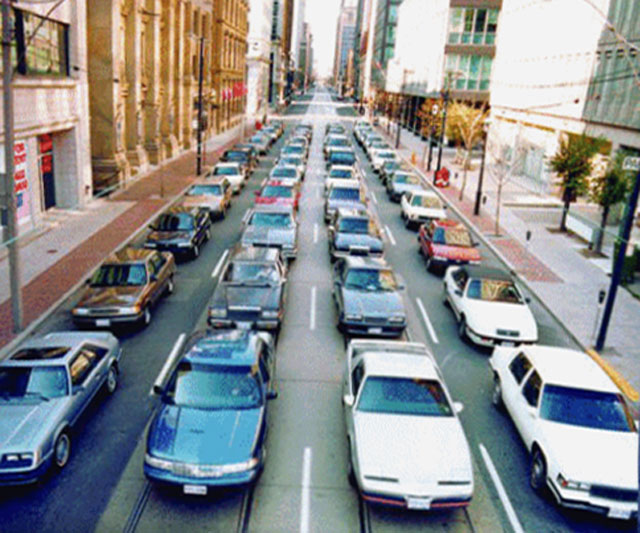
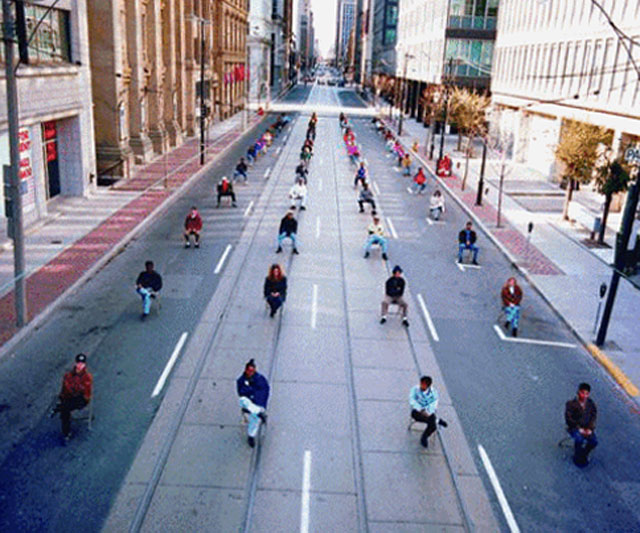
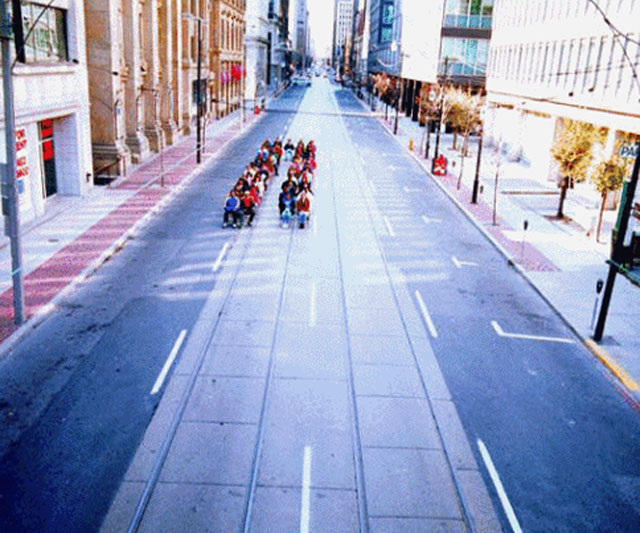
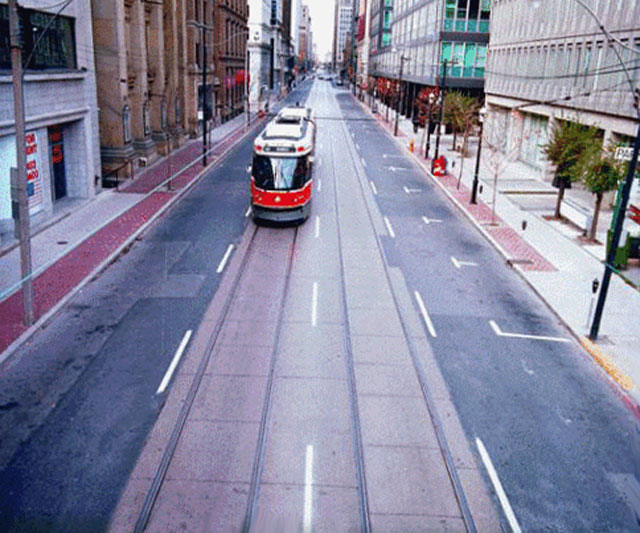
One Very Real Benefit of Public Transit
After I made this display (based on a gif idea by Peter from Texas), I found a set from Seattle that seemed even better—they start out with 200 people on 177 cars that need 3 buses, one light rail train, or 200 bicycles (which take almost the same length as the 177 cars, but the cars need 5 lanes while the cyclists need only one). According to a recently-completed study, women often take active transport (meaning walking or biking) to sports clubs; men seldom take active transport for shopping. There’s a higher use of active transport modes by persons with a university degree, and active transport is particularly higher for persons living in urban-centre neighbourhoods. (What? You could’ve guessed all that?)
Feats
- Easy to install and maintain, the LM2500 features a simple modular design, marine corrosion-resistant materials and minimum size, weight and space requirements per horsepower produced. The LM2500 marine gas turbine delivers high thermal efficiency and low fuel and airflow per horsepower produced. It’s frequently housed in a high-shock resistant, thermal, acoustic enclosure on a mounting base to attenuate noise in the engine room and to provide sensors for inlet icing and fire detection. It also houses fire extinguishing equipment. Application examples include: Cruisers, Destroyers, Frigates, Corvettes, Patrol Boats, Aircraft Carriers, Cargo / Auxiliary Ships, Cruise Ships, and High Speed Ferries.
- In 2008, for a few precious seconds, these 100 skydivers linked up, thousands of feet above Florida. It was all the time they needed to break the world record for the largest number to gather in a single formation. Roughly the size of a 747 jet, the successful formation broke their previous record of an 85-way canopy formation set in 2005. A canopy formation, one of the most difficult manoeuvres, is built by participants flying their parachutes in proximity to each other and then taking grips (“docking”) on other jumpers’ parachutes. The 100 jumpers were able to join together on the second of 2 attempts, using their hands and feet to hook up to adjacent parachutes. The skydivers exited 5 planes flying at staggered altitudes to create the formation. 56% of the team were from America, the other 44% from countries all over the globe—Norway, Sweden, Belgium, Germany, Russia, UK, Australia, New Zealand, Brazil, Egypt, Argentina and Canada.
- Gujarat Solar Park is the largest in the world, covering 2,000 hectares of northern Gujarat, India. It has the capacity to generate 600 megawatts of power and is estimated to save 8 million tonnes of CO² emissions yearly.
Ron Fouchier and colleagues at the Erasmus Medical Centre in Rotterdam are carrying out research using ferrets on the H5N1 strain of bird-flu. They say that repeatedly infecting ferrets until a variant develops that possesses airborne transmissibility to other mammals is necessary for them to develop a vaccine that could save lives in the event that should happen again in nature. But a letter to the European Commission signed by 56 eminent scientists from 14 countries, many of whom are national science academicians including three Nobel laureates and several fellows of the Royal Society, says that “misstatements” were made by the president of the European Society of Virology, Professor Giorgio Palu, who they claim made “incorrect” assertions about the need for such dangerous research. They said it was also “untrue” to state that such a mutation has already been observed in nature. The Dutch government claims that the work has a possible dual civil-military function and could be misused by bioterrorists. The signatories of the letter, who include eminent virologists, microbiologists and vaccine experts, warn that there’s a serious risk of an accidental release of a pandemic H5N1 virus from laboratories undertaking such research. “The potential for accidental release of a hazardous pathogen isn’t hypothetical, as demonstrated by an alarming increase in the number of potential and actual release events in laboratories working with high-threat pathogens,” they say. “We are in a situation where the impact of global spread could be catastrophic.”
For Some, It Is Currently Winter
- I assume this is a photograph. Of Quebec City, even.
- I’m guessing Eastern Europe. I have a reason for thinking that but it’s too complicated to explain. Besides…I forget…
- Toronto under glass—ice has glazed the city. Even the December ducks squawk at freezing rain.
“The ageing process we discovered is like a married couple—when they’re young, they communicate well, but over time, living in close quarters for many years, communication breaks down. And just like with a couple, restoring communication solves the problem,” said Harvard Medical School Professor of Genetics David Sinclair, senior author on a recent study. A series of molecular events enable communication inside cells between the nucleus and mitochondria. As communication breaks down, ageing accelerates. By administering a molecule naturally produced by the human body, NAD, scientists restored the communication network in older mice, which later evidenced key biological hallmarks comparable to those of much younger animals (though not increased strength). Mitochondria are often referred to as the cell’s “powerhouse,” generating chemical energy to carry out essential biological functions. These self-contained organelles live inside animal cells and house their own small genomes. They’ve long been identified as key biological players in ageing as they become increasingly dysfunctional over time. Researchers have generally been sceptical that ageing could be reversed because it was thought mainly to be due to irreversible mutations in mitochondrial DNA. Ana Gomes, a postdoctoral scientist in the Sinclair lab, discovered an intricate cascade of events that begins with a chemical called NAD and concludes with a key molecule that shuttles information and coordinates activities between the cell’s nuclear genome and the mitochondrial genome. Cells stay healthy as long as coordination between the genomes remains fluid. For reasons still unclear, as bodies age, levels of the chemical NAD decline. Without sufficient NAD, the process begins to deteriorate and signs of ageing and disease become apparent. Gomes found that by administering an endogenous compound that cells transform into NAD, she could repair the broken network and rapidly restore communication and mitochondrial function. If the compound is given early enough—prior to excessive mutation accumulation—some aspects of the ageing process can be reversed. Examining muscle from two-year-old mice that had been given the NAD-producing compound for just one week, the researchers looked for indicators of insulin resistance, inflammation, and muscle wasting. In all 3, mice tissues resembled those of 6-month-old mice. This would be like a 60-year-old human having test results similar to a 20-year-old in those specific areas. Can muscles be strengthened with longer treatment? Will these mice go on to have a healthier, longer life? They are being closely watched.
The findings were published 19 December 2013 in Cell.
We Leave Our Spoor Everywhere…
- When using a biometric fingerprint reader for access control, you can assign yourself a duress fingerprint. This means another finger can be used in times of duress—for example if you are being forced to open a door. The door will open as normal but the system will silently send a duress signal to the main terminal or guard room.
- Fingerprints can reveal critical evidence with the use of a different tool that reads and provides an image of the fingerprint’s chemical signature—meaning what the person has recently handled, including trace amounts of explosives, drugs or other materials left behind in the prints. Developed at Purdue University, the new technology can also distinguish between overlapping fingerprints left by different individuals—a difficult task for current optical forensic methods. The technology can easily uncover fingerprints buried beneath others because the distribution of compounds found in each fingerprint is unique enough to pull one fingerprint from beneath layers of others. Mass spectrometry works by first turning molecules into ions, or electrically charged versions of themselves, so their masses can be analysed. The Purdue procedure performs the ionisation step by spraying a stream of water in the presence of an electric field to create positively charged water droplets. Water molecules in the droplets contain an extra proton and are called ions. When the charged water droplets hit the surface of the sample being tested, they transfer their extra proton to molecules in the sample, turning them into ions. The ionised molecules are then vacuumed into the mass spectrometer to be measured and analysed. The spectrometer sprays small sections of the sample with the charged water droplets, obtaining data for each section and combining the data sets to create an analysis of the sample as a whole. Software maps the information to create an image of the fingerprint from the distribution and intensity of selected ions.
- The most distinctive overall fingerprint patterns (arches, loops, and whorls) occur on the pads of the fingers, thumbs, and toes. The one illustrated is a magnified image of a loop, the commonest such pattern, which almost everyone has at least one of. The sweat pores appear as little white dots at intervals along the ridges. Within such overall patterns are individual features known as ridge characteristics, ridge detail, or minutiae. In places, the parallel ridges split into two (a fork or bifurcation), stop dead (a ridge ending), or divide into two and then join up again (a lake or enclosure). These features were studied and named by the British anthropologist and founder of the science of eugenics, Sir Francis Galton. It is such features (marked in the figure) and their proximity to one another that define the unique individuality of fingerprints. The prints of each finger pad typically contain about 100 such minutiae. In many people, the overall macro-patterns on corresponding fingers of the left and right hands are roughly mirror images of each other. But it’s possible to have a different feature pattern on every digit.
- Oh, look. A rainbow-coloured thumbprint.
- It’s an invitation. Why would anyone send out invitations with that on them? Is it an invitation to come be fingerprinted? To come and leave your fingerprints in interesting places? And then everyone gets dusted?
- Fingerprints are being collected for Universal Identification.
Calculating Who Dies on Death Row
Which inmates on death row will eventually be executed?. The US actually executes only a small proportion of the people it sentences to death (in one recent year, it was 53 of the 3,228 inmates on death row). But now, with chilling accuracy, a new computer system can predict which death row prisoners will live and which die. And its dispassionate analysis has confirmed suspicions that the people most likely to be executed are those who’ve had the least schooling, rather than those who’ve committed the most heinous crimes. How were those 53 chosen? Researchers turned to an artificial neural network (ANN), an intelligent computer system modelled after the human brain that deduces how bits of a jumble of data relate to each other and then makes predictions based on its analysis. ANNs have already been used to predict the likelihood that juveniles given parole will reoffend and to pinpoint students most likely to drop out of college courses. ANNs appear to be quite good at revealing non-obvious patterns. So researchers entered profiles of 1,000 death row inmates between 1973 and 2000. Half had been executed and the other half had not. Each profile contained 18 factors, including sex, age, race, marital status, educational level, and capital offences committed. Profiles for 300 more inmates from the same period were input for ANN to predict what had happened to them. ANN correctly predicted the fate of more than 90%. Gender turned out to be the most significant factor because women are rarely executed. Race, a key factor in sentencing criminals to death, wasn’t found to be particularly important when it came to executing them. The most striking factor by far was education level—the number of years the inmate had spent in high school. This may indicate how well the inmate can manage the appeal process. It’s not what you’ve done, but more how you defend yourself. But researchers don’t expect their work to affect policy (via _New Scientist).
The following 21 countries are believed by Amnesty International to have carried out executions in 2012: Afghanistan (14), Bangladesh (1), Belarus (3+), China (2000+), Gambia (9), India (1), Iran (314+), Iraq (129+), Japan (7), North Korea (6+), Pakistan (1), Palestine (6), Republic of China (6), Saudi Arabia (79+), Somalia (6+), South Sudan (5+), Sudan (19+), UAE (1), USA (43), Yemen (28+).
Making a Point
From a review of Freedom for Sale: How We Made Money and Lost Our Liberty by John Kampfner Simon & Schuster (Kampfner was for years a foreign correspondent and is former editor of the New Statesman ):
In advanced societies, the people have an implicit bargain with their government. In exchange for a range of both consumer goods and private freedoms (the latter including a right to travel, to marry whomever, to live wherever, to read whatever, to do business without undue interference from government or unions, and to pay low or no taxes), the rich and the middle class agree to abdicate politics. The government keeps opposition parties, mass media, and academic or journalistic muckrakers on a short leash. Surveillance increases; civil liberties nosedive. Transparency, accountability, and citizen initiatives are sacrificed on the altar of Order, Security and Prosperity. Singapore is a prime example: an extraordinarily high per capita income, no destitution, equitable education, pension and health care systems, government agencies are efficient and apparently honest, violent crime and business fraud are rare, travel is unhindered, business innovations are welcome, shopping is world-class, streets and public buildings are clean and neat.
On the other hand, nothing is allowed that might threaten public order or social stability (with the government defining those terms): spitting, chewing gum, yelling, failing to flush a toilet in a public place, overstaying one’s visa, depicting or engaging in certain sexual acts, rashly employing irony or sarcasm, or criticising the government in ways not deemed “constructive”. These crimes are punished fast and hard—petty offenders are fined or caned while overzealous opposition politicians or trade unionists are imprisoned for a lengthy stay. Indiscreet newspapers or blogs are sued for defamation. Singapore requires relinquishing freedom of expression in return for a share of the wealth. Many Chinese officials and businessmen feel the “Singapore model” is more suitable for their country than Western liberal democracy. (Dissent? Individual rights against the state? Who needs them?) Ties between the two countries are cordial and expanding. China sends Party bureaucrats to Singapore each year to study public administration. There’s more in play than shared “Asian values” that purportedly esteem collective prosperity above individual liberty. An authoritarian regime can, if stable, facilitate wealth creation for businesses. This trade-off (political freedom for economic growth) is being pursued in Russia, India, the Middle East, Europe, and the US as well. Is it inherently a good bargain or a bad bargain? What is “a good life”? Is a life free from want and danger good enough? What’s really important to you?
Mary, Mary Quite Contrary How Does Your Garden Grow?
Knit Socks, Knit Your Brow, Sure—but Knit Your Garden?
Amigurumi is the Japanese art of knitting or crocheting small stuffed animals and anthropomorphic creatures. The word is derived from a combination of the Japanese words ami, meaning crocheted or knitted, and nuigurumi, meaning stuffed doll. Amigurumi are typically animals, but can include artistic renderings or inanimate objects. Amigurumi have no practical use; they are created and collected for aesthetic reasons, mainly cuteness.
How Do They Do That?
First, the sponsor of a fireworks show picks which specific music is to be used. Then the fireworks choreographer listens to it several times, mapping which types of shells are most suitable in which sequence. Individual forms break a fireworks display into one-minute intervals. Each form specifies exactly which type of shell to fire in which sequence at which delay after the previous firing. In general, the bigger the shell, the longer it takes to burst and the higher it goes. The choreographer creates a firing script showing size, height and firing cycle length per one-minute interval. The peaks of these intervals needs to correspond to music. A good fireworks choreography software package allows dragging and dropping items from a digital catalogue directly into an online script, which computes the resulting audience visual. Tweaking to get just the look and timing desired allows a script map to show where shells need to be positioned and at what angle. A choreographer can fill the sky with effects—having them move from left to right as well as up and down. Angling effects to different areas of the sky helps reduce smoke buildup (which can impair visibility for some viewers.
Why did Erwin Schrödinger, Paul Dirac and Wolfgang Pauli work in very small garages?
Because they were quantum mechanics.
A blowfly goes into a bar and asks: “Is that stool taken?”
Why did the chicken cross the Möbius strip? To get to the other… eh? Hang on…
A statistician gave birth to twins, but only had one of them baptised. She kept the other as a control.
Best Wishes for the New Year from Flat Rock
 Animals
Animals Animation
Animation Art of Playing Cards
Art of Playing Cards Drugs
Drugs Education
Education Environment
Environment Flying
Flying History
History Humour
Humour Immigration
Immigration Info/Tech
Info/Tech Intellectual/Entertaining
Intellectual/Entertaining Lifestyles
Lifestyles Men
Men Money/Politics/Law
Money/Politics/Law New Jersey
New Jersey Odds and Oddities
Odds and Oddities Older & Under
Older & Under Photography
Photography Prisons
Prisons Relationships
Relationships Science
Science Social/Cultural
Social/Cultural Terrorism
Terrorism Wellington
Wellington Working
Working Zero Return Investment
Zero Return Investment